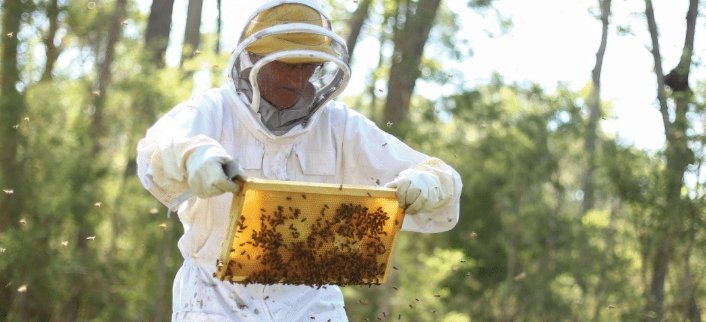Australian beekeepers are facing rising costs and labour demands from Varroa destructor (Varroa) management.
A 2024 COLOSS Survey revealed Varroa is costing the honey bee industry more than just dollars, with labour impacts also increasing.
The 2025 survey closed November 1.
Cost per hive, cost of time
Almost 1000 beekeepers provided data on more than 120,000 colonies in the landmark 2024 survey, providing a snapshot of the challenges facing an industry that contributes an estimated $14 billion to the Australian economy.
The 2024 COLOSS survey report showed in NSW, where Varroa was first identified, beekeepers are spending an average of 23.5 minutes and $21 per hive on management and treatment.
For a commercial operation with 1000 hives, this equates to an annual cost of an estimated $21,000 and 392 hours (10+ work weeks) of additional labour.
With beekeepers dedicating an average of more than 10 working weeks each year to the specialised management and treatment of Varroa, less time is available for other essential tasks, such as proactive hive care and environmental management, which may suffer as a result.
Varroa is one of the many challenges facing the Australian honey bee industry which it is seeking to better understand with the launch of the 2025 COLOSS Survey.
Honeybee and pollination industry national colony loss survey project manager Dr Michael Holmes, at Australian National University (ANU), says participation in the survey is voluntary but critical for building an accurate industry snapshot.
“By building an informed and accurate dataset, we prompt industry and government action to safeguard not only the honey bee industry, but other agricultural industries that are reliant on the Australian honeybee population for pollination,” he says.
Two thirds of agricultural goods require honeybee pollination, with 35 industries, which include Australian favourites such as avocados and cherries, depending wholly on pollination to produce fruits and nuts.
The survey revealed a national annual colony loss rate of 1.55 per cent, highlighting the vulnerability of Australia’s honeybee population.
Unsurprisingly, Varroa was identified as a leading cause of colony loss, placing significant economic burdens on beekeepers through reduced honey production, additional labour and increased hive management costs.
The survey revealed the breadth of resources required to protect hives and support research, as well as integrate pest management strategies and proactive practices to ensure productive and healthy colonies.
Positive participation needed
The industry peak body says data is needed to shape policy and resourcing for local honey production and hive management.
Australian Honeybee Industry Council (AHBIC) chief executive Danny Le Feuvre says colony loss doesn’t only impact honey production or key agricultural sectors, it is also threatening the livelihood of beekeepers.
“They are hit with the cost to replace hives or invest in preventative measures, as well as the loss of income that comes with the collapse of a colony.
“By investing in research and understanding the national state of play, we can protect our honeybees and build our resilience as an industry,” he says.
The COLOSS survey is funded through the National Varroa Transition to Management Program and administered collaboratively with the support of ANU, AHBIC, and AgriFutures Australia.




